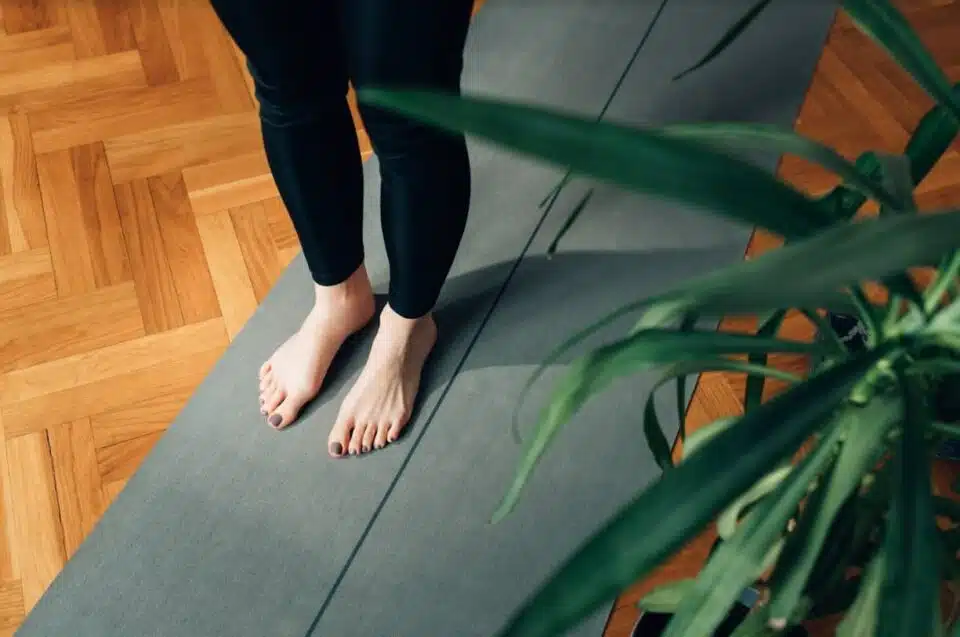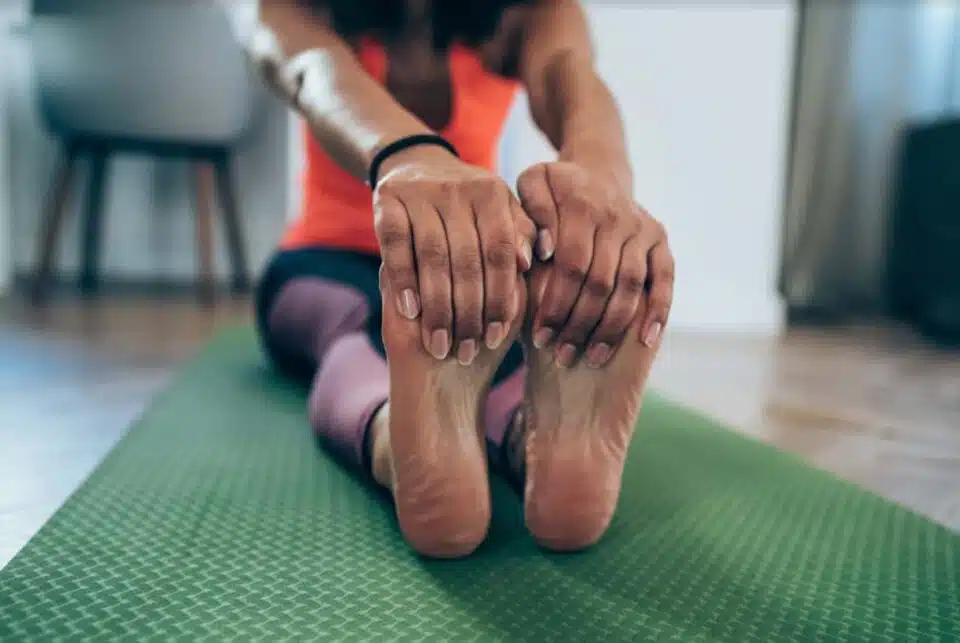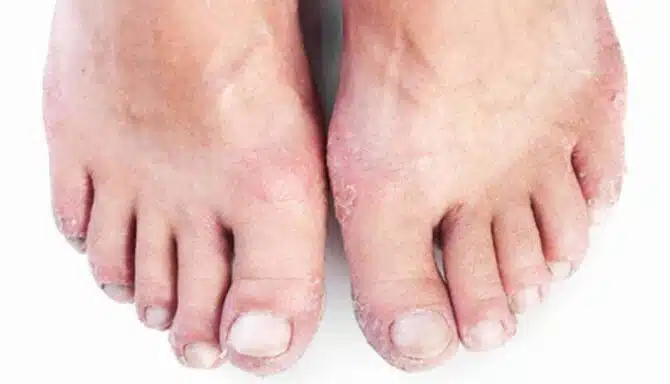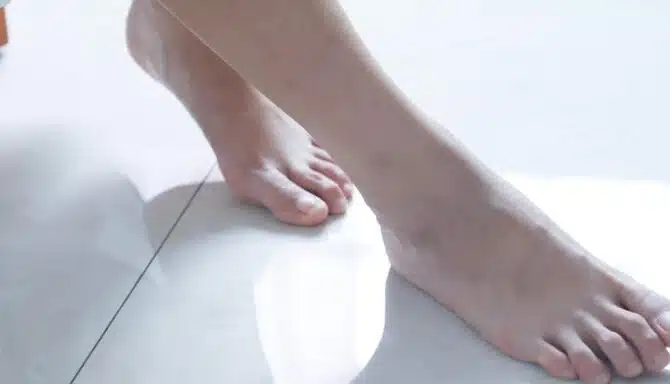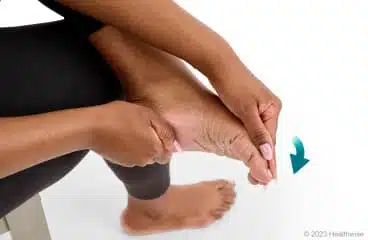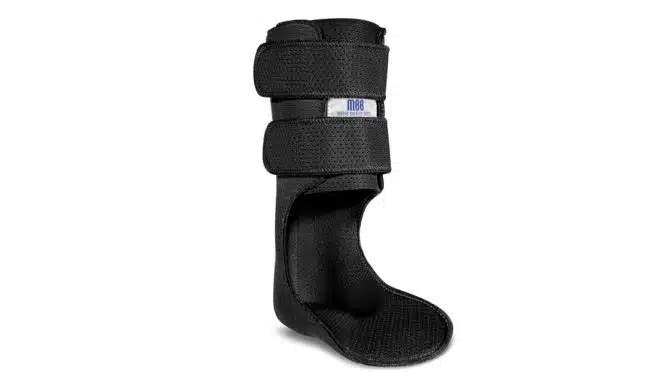Do you have an irresistible urge to move your legs while trying to relax? If this sounds like you, you may suffer from restless leg syndrome.
There are countless leg conditions out there, some directly related to the vast array of foot conditions we treat at Feet First Clinic. However, many people do not even recognize restless leg syndrome as an issue. For instance, if you’re someone with a lot of natural energy and pep, you may think your jittery legs are normal. But unbeknownst to you, your restless legs result from a neurological disorder affecting roughly 5% of the general population and 10% of people over 65 years old.
Today’s article will address everything you need to know about restless leg syndrome, including:
- What is restless leg syndrome?
- Symptoms of restless leg syndrome
- Causes of restless leg syndrome
- Restless leg syndrome treatment
- Home remedies for restless leg syndrome
What is Restless Leg Syndrome?
Restless leg syndrome(RLS) is a neurological sleep disorder that causes an unpleasant sensation in the legs and an uncontrollable desire to move them. Symptoms typically arise when people are at rest, such as while watching a movie, sitting at a desk or trying to fall asleep at night. Furthermore, moving the legs can provide temporary relief, but RLS symptoms will appear again when you fall back into a sedentary position.
RLS is also called Willis-Ekbom Disease.
Symptoms of Restless Leg Syndrome
The primary symptom of RLS is, of course, a nagging desire to move your legs.
Usually, we encourage high energy levels and love when people want to move their limbs and be active. However, while exercising is excellent for fighting foot pain and getting into shape, this fidgety, uncontrollable feeling can be distressing when trying to relax. In other words, it’s important to understand that RLS is a serious problem that shouldn’t be diminished, and it’s critical to differentiate between RLS and being physically energetic.
To gain a better understanding of whether or not you may have RLS, you can look out for the following symptoms:
- An unpleasant feeling in the legs. RLS patients have described the feeling in numerous ways, from a “crawling” sensation to electric pulsing. Other ways to describe the sensation include aching, itching, throbbing, pulling and “creeping.”
- An inability to settle into a sedentary position. RLS sensations kick in when you’re trying to relax or are in a place where you can’t move for a while. You may be seated on an airplane for hours or simply trying to fall asleep in bed after a long day. Moreover, you’ll notice the symptoms subside when you start to move again.
- Daytime drowsiness and a lack of sleep. RLS can be a significant contributor to insomnia and is technically a sleep disorder, so it’s essential to seek medical attention when you notice an impact on your sleep schedule.
Causes of Restless Leg Syndrome
There are no known causes of most cases of RLS. That said, scientific evidence suggests the following risk factors may play a role in RLS development:
- RLS is slightly more common in seniors, likely because diabetic neuropathy, end-stage renal disease and hemodialysis are known risk factors.
- Specific medications can make RLS symptoms worse. Some examples include antihistamines, anti-nausea and anti-emetic drugs, antidepressant medications and antipsychotic medications.
- An iron deficiency can contribute to RLS.
- Genetics can play a role in RLS development. Between 40-90 percent of affected individuals have at least one first-degree relative with RLS, like a parent or sibling.
- For unknown reasons, women are more likely to experience RLS than men.
Restless Leg Syndrome Treatment
It may seem like nothing will help your restless legs. Since the symptoms are quite strange, it may feel like you simply have to put up with them. But rest assured, there are ways you can make your life much more comfortable while dealing with RLS:
- Compression stockings: Compression wear is known to help with aches and alleviate sedentary symptoms, so it may be beneficial for those with RLS. More specifically, the National Library of Medicine notes that when light pressure is applied to the limbs, it can act as a counter-stimuli to the uncomfortable feeling RLS causes. The feeling of pressure essentially overpowers the other sensations.
- Massage therapy: Registered massage therapy may prompt dopamine release in the body. It can also alleviate tension in the skin and muscles.
- Medications: Dopamine-related medications, iron supplements, benzodiazepines (and other sleep-inducing drugs), and alpha-2 delta drugs (calcium channel blockers) may be prescribed by your family doctor.

Home Remedies for Restless Leg Syndrome
Sometimes, your RLS symptoms will bother you before you can see your family doctor or get a compression stocking fitting with a chiropodist. If you’re waiting around for treatment and becoming progressively more uncomfortable, these at-home remedies may help:
- Hot baths: The warm temperature of bath water can “distract” your muscles when RLS sensations arise.
- Restricting caffeine and alcohol: Stimulants and depressants can hurt your sleep. However, if you suffer from severe RLS, restricting caffeine may not do much, but it can be helpful in mild cases. Likewise, alcohol can make you sleepy, but it also tends to wake people up in the middle of the night.
- Ice packs: Cold compresses can “distract” your muscles like hot water can.
- Exercises: Foot and leg stretches, specifically flexing the ankles and performing toe circles, can help provide relief. That said, sudden vigorous exercise isn’t always recommended for people with RLS. Instead, you should ease into moderate routines.
- Magnesium and Calcium: These supplements may decrease muscle spasms. For the best results, take them before bed.
- Valerian and Passionflower: These herbs may relax your muscles and trigger sleep.


